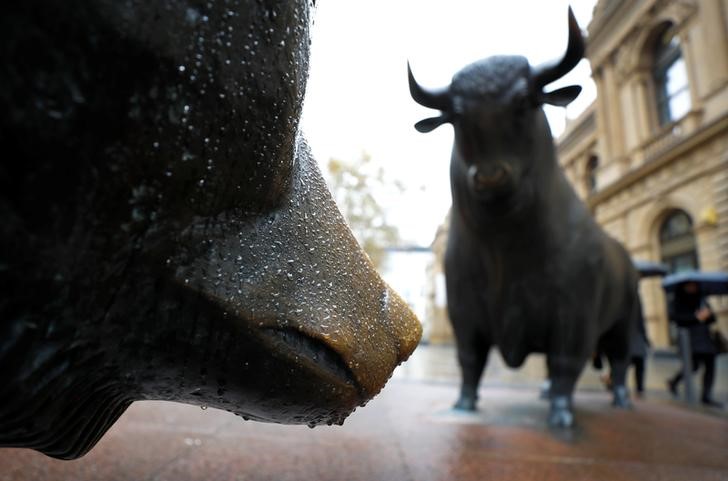By Peter Nurse
Investing.com - European stock markets traded in a mixed fashion Wednesday, as traders digest stronger-than-expected German economic growth as well a swathe of corporate results.
At 3:45 AM ET (0845 GMT), the DAX in Germany traded 0.4% higher, while the CAC 40 in France fell 0.1% and the U.K.'s FTSE index dropped 0.7%.
Bullish exports and solid construction activity helped the German economy to grow by a stronger-than-expected 0.3% in the final quarter of last year, a revision higher from an earlier estimate of 0.1% growth.
The 2020 full-year GDP figure for Europe's largest economy was also revised higher to -4.9% from -5.0%.
Also helping the tone was the news that French manufacturing sentiment rose in February, for the third consecutive month, albeit by less than expected.
Turning to the corporate sector, Lloyds (LON:LLOY) stock rose 1.3% after the U.K.-based bank set out fresh targets to expand its insurance and wealth business and further cut costs, as the bank resumed a dividend despite a sharp fall in profits and rise in bad loan provisions for 2020.
On the flip side, AstraZeneca (NASDAQ:AZN) stock fell 1.4% after Reuters reported that the drugmaker has told the European Union it expects to deliver less than half the Covid-19 vaccines it was contracted to supply in the second quarter.
Puma (DE:PUMG) stock fell 3.2% after the sportswear maker's CEO Bjorn Gulden said the pandemic will still be a drag on business for the first half of the current year.
Across the Atlantic, Federal Reserve Chairman Jerome Powell kept a dovish tone during his testimony before the Senate Banking Committee on Tuesday, as he batted away worries around higher interest rates and inflation.
However, despite Powell’s reassurance, some investors are beginning to pull forward their rate-hike expectations, predicting stronger-than-expected economic growth and a jump in inflation on the back of the proposed additional stimulus.
Fed funds futures now project the first 25 basis point increase in the central bank's key rate by the end of 2022.
Oil prices retreated Wednesday after U.S. stockpiles unexpectedly rose just over 1 million barrels last week, according to the American Petroleum Institute, in the wake of the severe cold snap which hit Texas, the largest crude producing U.S. state, and the other southern states.
Although the wintry conditions shut in production across the region and left millions without power, it also stunted fuel demand from refineries that were forced to shut down.
The official supply numbers from the U.S. Energy Information Administration are due later Wednesday.
U.S. crude futures traded 0.5% lower at $61.38 a barrel, while the international benchmark Brent contract fell 0.2% to $64.35.
Elsewhere, gold futures were flat at $1,805.90/oz, while EUR/USD traded 0.2% higher at 1.2167.
